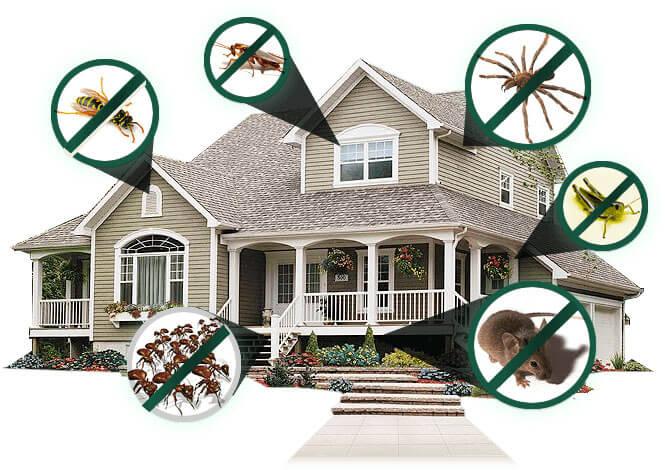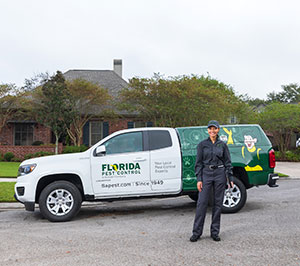Bed Insect Therapy Failure: Comparing Chemical Vs. Non-Chemical Solutions
In the realm of insect control, particularly when managing the relentless concern of bed bugs, the option in between chemical and non-chemical therapy options can be a critical one. Both methods provide distinct advantages and disadvantages, affecting variables such as effectiveness, security factors to consider, and total price. By taking a look at the nuanced details of each technique, a clearer understanding of which path to pursue in dealing with a bed insect invasion can be attained.
Effectiveness of Chemical Treatments
Chemical treatments for bed pest invasions have actually been widely recognized for their potent and quick efficacy in removing these bugs. When taking into consideration the efficiency of chemical therapies, it is vital to comprehend that they can provide a fast and extensive service to a bed pest problem.
Additionally, chemical therapies have the advantage of offering residual results, suggesting that they can continue to remove bed bugs also after the preliminary application. This recurring activity is particularly beneficial in combating any potential re-infestations. Furthermore, the quick action of chemical therapies can bring alleviation to individuals dealing with extreme bed bug invasions, enabling them to restore control of their home promptly.
Security Interest In Chemical Solutions
One essential facet that requires mindful factor to consider when making use of chemical services for bed bug treatment is guaranteeing the security of owners and the setting. While chemical therapies can be efficient in removing bed pests, they may pose dangers otherwise managed properly. One of the primary security worry about chemical services is the possible damage they can cause to human health and wellness. Direct exposure to particular chemicals used in bed pest treatments can result in breathing problems, skin inflammation, or other negative responses, specifically in individuals with pre-existing problems or level of sensitivities. In addition, inappropriate application or dosage of chemical pesticides can lead to poisonous deposits remaining in the treated area, positioning long-lasting health risks to owners.
Additionally, the environmental impact of chemical services is another significant factor to consider. Some chemicals made use of in bed pest therapies may be hazardous to beneficial pests, wildlife, and ecosystems if they leach into the soil or water systems. It is necessary to utilize chemical therapies deliberately, complying with safety guidelines, and taking into consideration less harmful options to alleviate these dangers and guarantee the risk-free and efficient management of bed bug invasions.
Advantages of Non-Chemical Approaches
Considering the prospective security concerns and environmental impact associated with chemical remedies for bed pest treatment, exploring non-chemical strategies offers an appealing option with a number of distinctive benefits. Non-chemical methods supply a more secure alternative for houses, particularly those with children, family pets, or individuals delicate to severe chemicals. These methods get rid of the threats of exposure to toxic materials, reducing the potential for damaging health impacts. In addition, non-chemical therapies are eco-friendly, as they do not contribute to air or water air pollution, making them a lasting choice for bug control.
In addition, non-chemical remedies can be effective in targeting bed bugs, including hard-to-reach areas where chemical therapies might not penetrate - A1 charlotte pest control companies. Methods such as warmth treatment, vacuuming, vapor cleaning, and bed mattress coverings give complete obliteration without the use of damaging chemicals.
Limitations of Non-Chemical Treatments

Furthermore, non-chemical treatments often call for several applications to accomplish successful elimination. This can be time-consuming and might not always ensure complete elimination of all bed bugs and their eggs, specifically in surprise or hard-to-reach areas.
In addition, the success of non-chemical therapies heavily depends on correct execution and thoroughness, which can be testing for individuals without expert proficiency. Insufficient application of non-chemical approaches may result in insufficient removal, resulting in persistent invasions and the demand for additional therapies.
For that reason, while non-chemical treatments have their benefits, it is important to acknowledge YOURURL.com these constraints and consider them when establishing one of the most efficient approach for handling bed bug infestations.
Price Contrast: Chemical Vs. Non-Chemical Options
Given the constraints related to non-chemical therapies, an important aspect to examine in the context of bed bug administration is the cost contrast in between chemical and non-chemical options. Chemical treatments normally include the application of pesticides by experts, which can range from $250 to $900 per space, depending on the severity of the problem and the dimension of the area to be dealt with. On the other hand, non-chemical therapies like warm therapy or steam can be much more pricey, with expenses varying from $1,000 to $6,000 for a whole home. While the preliminary cost of chemical therapies may seem reduced, several therapies might be required to totally remove the invasion, potentially increasing the overall price. On the various other hand, non-chemical options may supply a much more lasting and environment-friendly solution, although they can be cost-prohibitive for some people. Inevitably, when considering the price of bed insect treatment options, it is very important to consider the upfront expenses versus the efficiency and long-term sustainability of the selected method.
Verdict

Thinking about the potential safety problems and ecological impact connected with chemical options for bed insect treatment, exploring non-chemical methods provides a promising choice with several distinctive benefits.Given the restrictions linked with non-chemical treatments, an essential aspect to review in the context of bed bug administration is the cost contrast in between chemical and non-chemical choices. In comparison, non-chemical treatments like warmth treatment or heavy steam can be more costly, with costs ranging from $1,000 to $6,000 for a whole home. While the preliminary cost of chemical therapies might seem lower, numerous therapies have a peek at this website might be needed to completely remove the invasion, possibly increasing the total price.In final thought, when contrasting chemical and non-chemical bed bug treatment options, it is crucial to take into consideration effectiveness, security, benefits, restrictions, and expense.